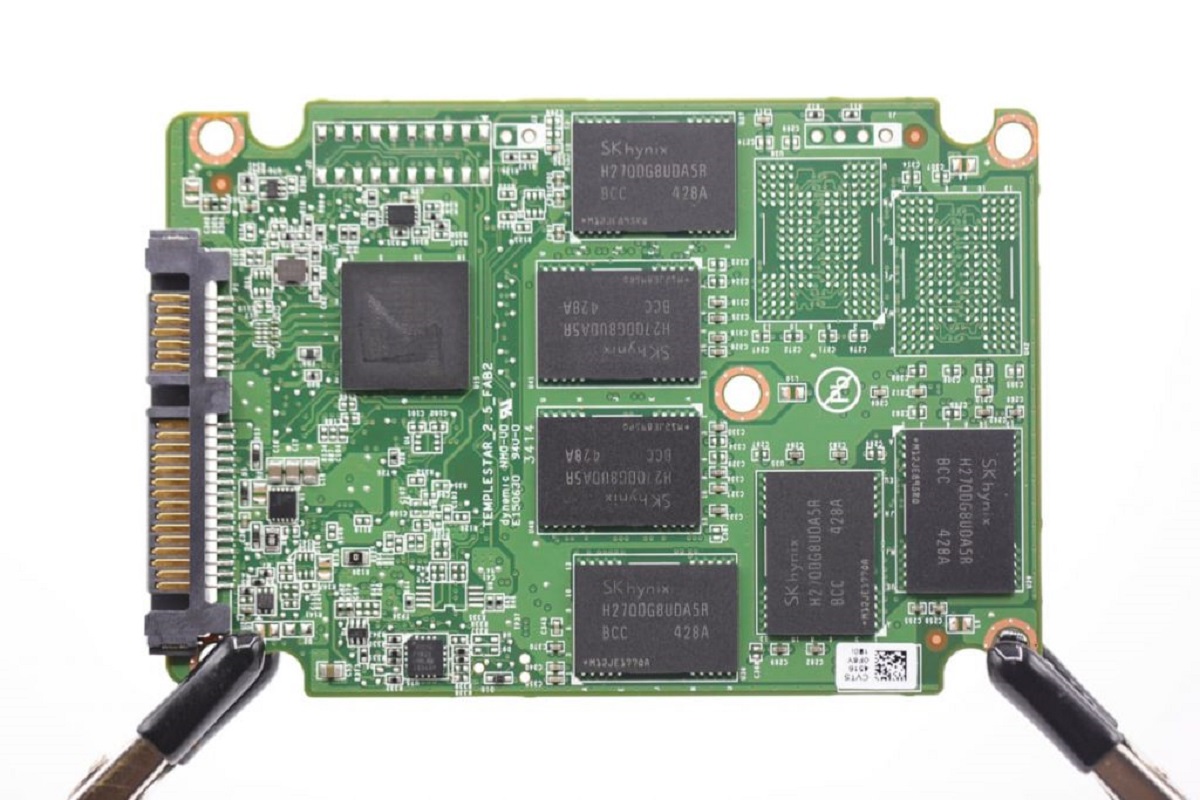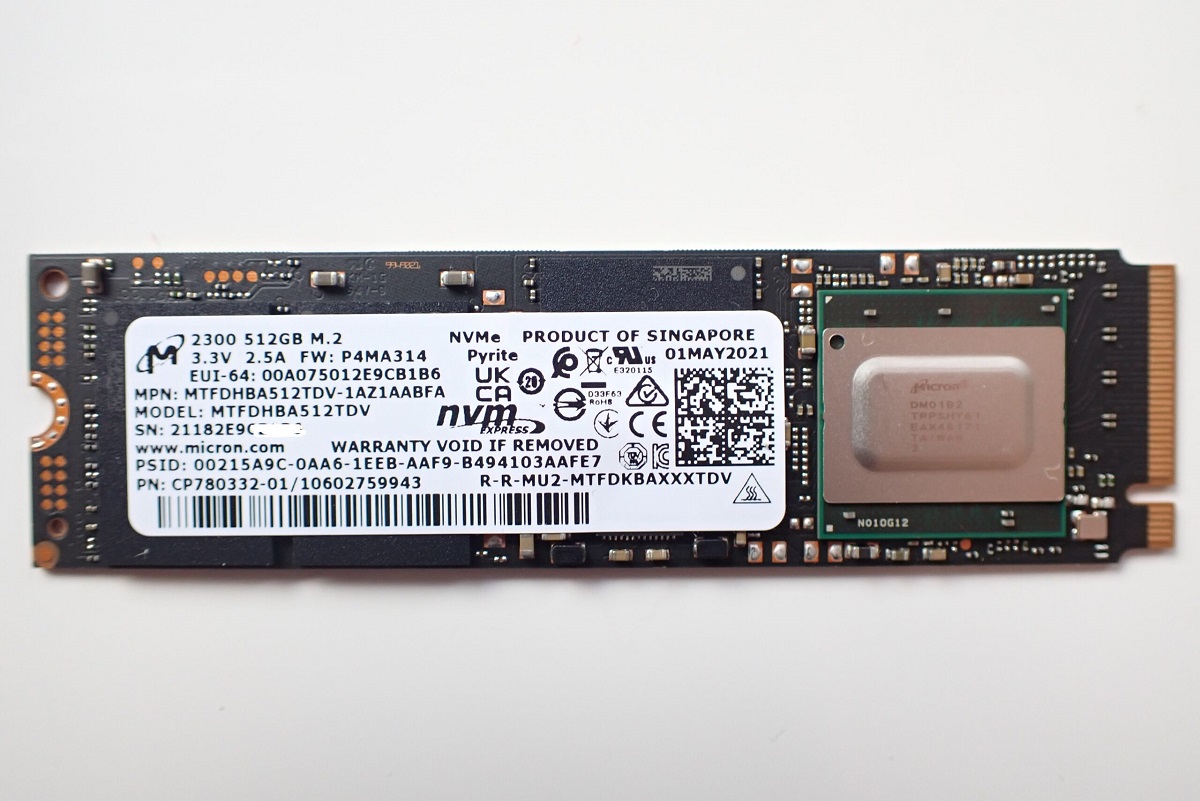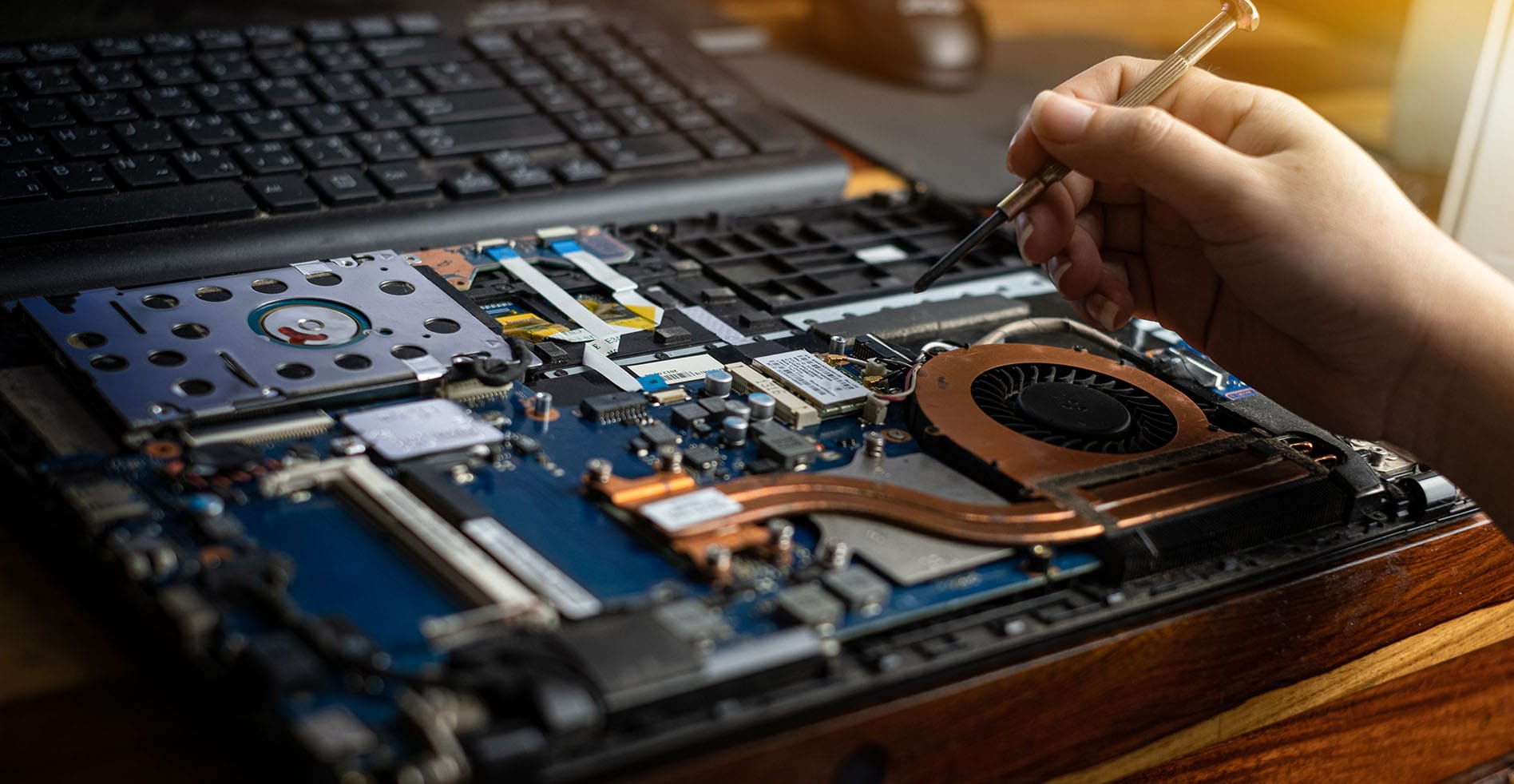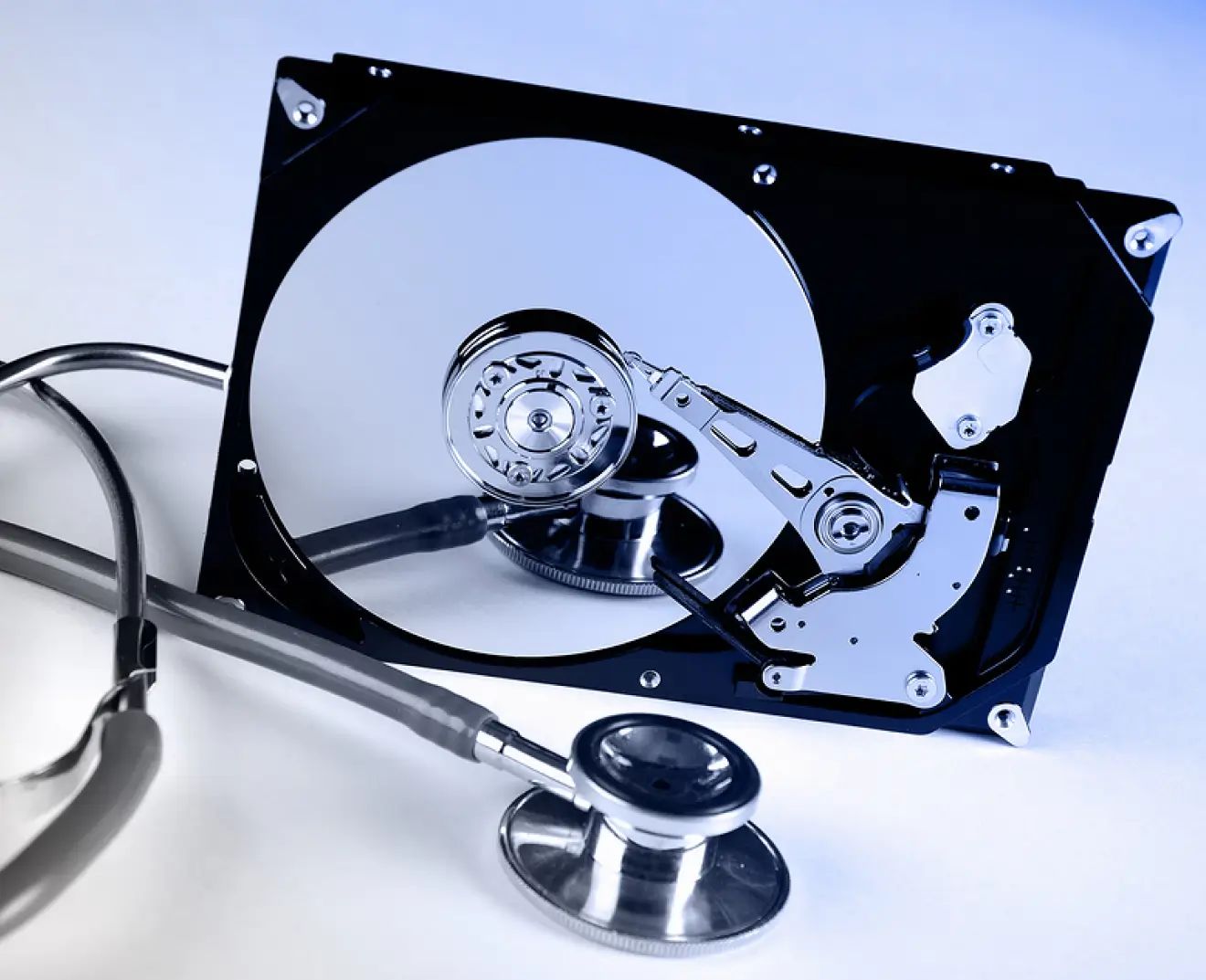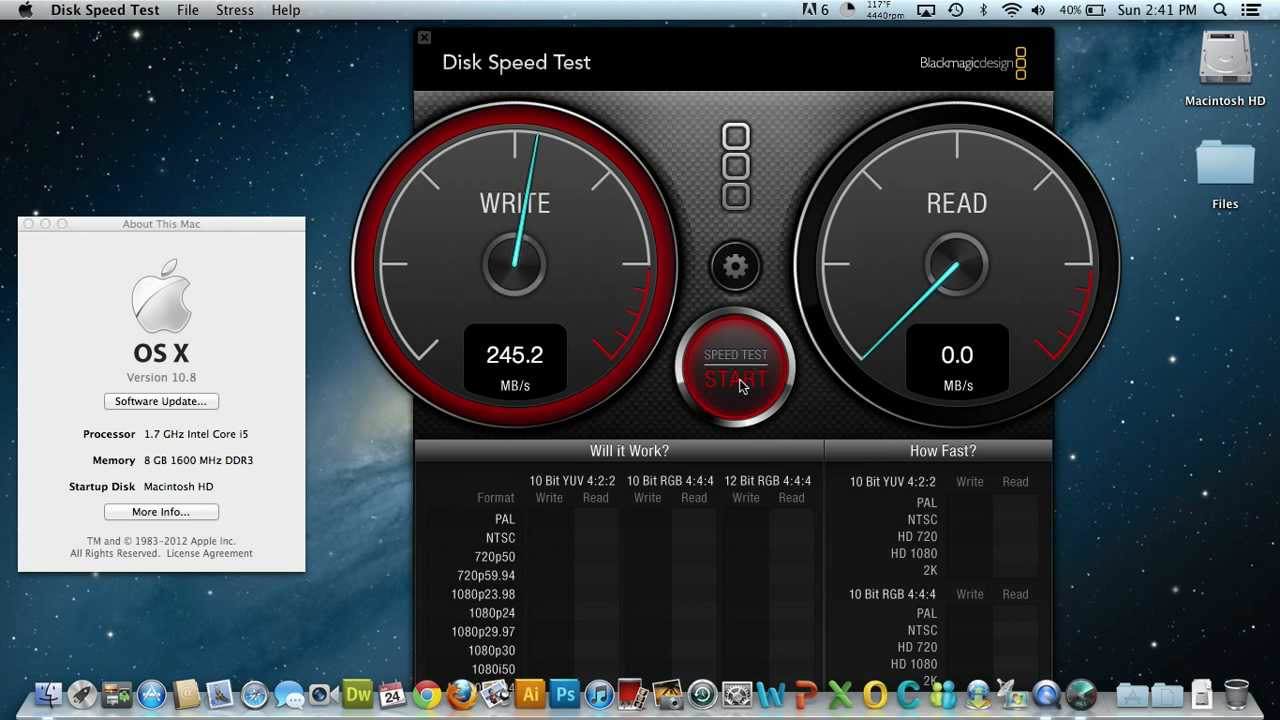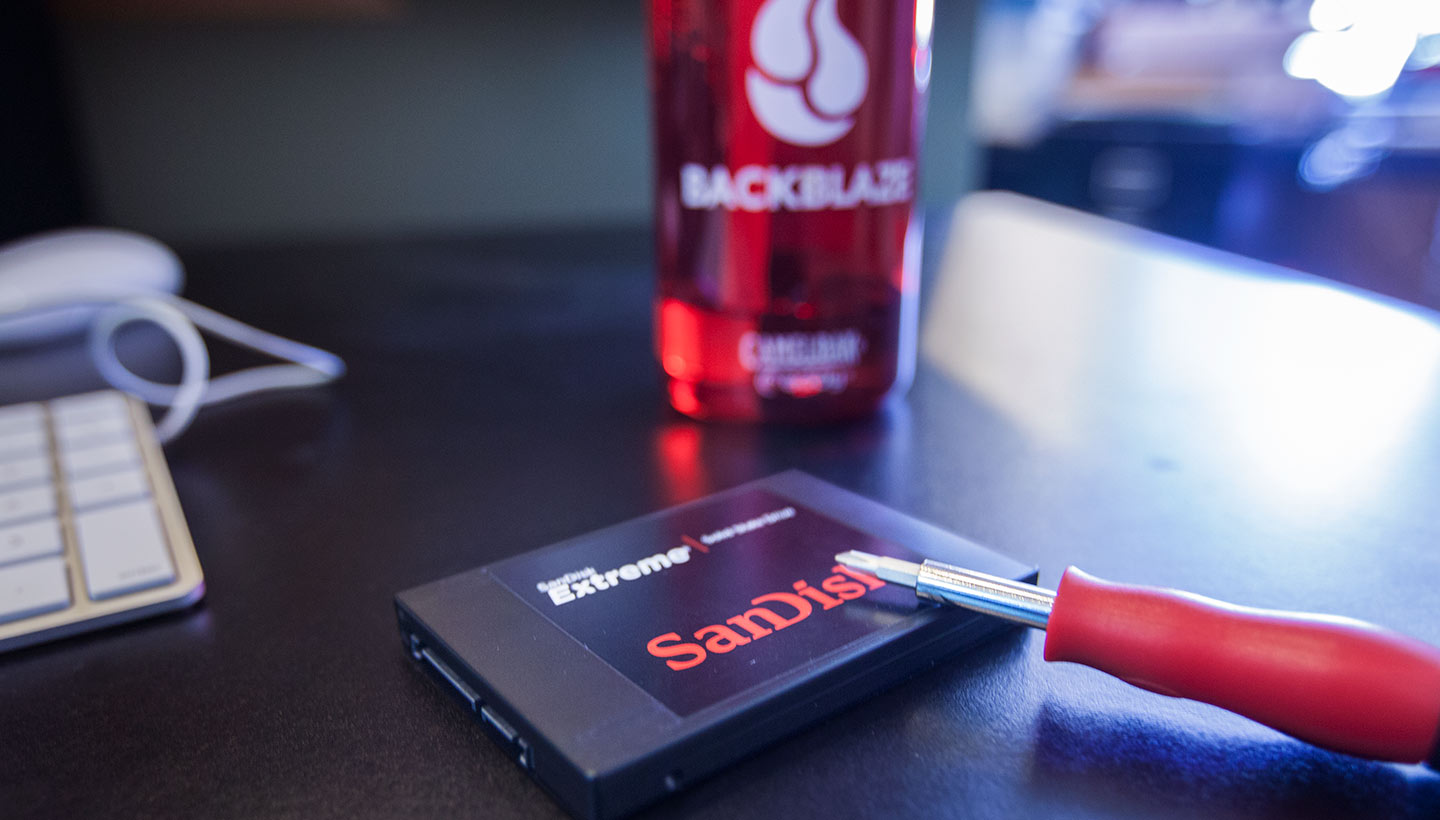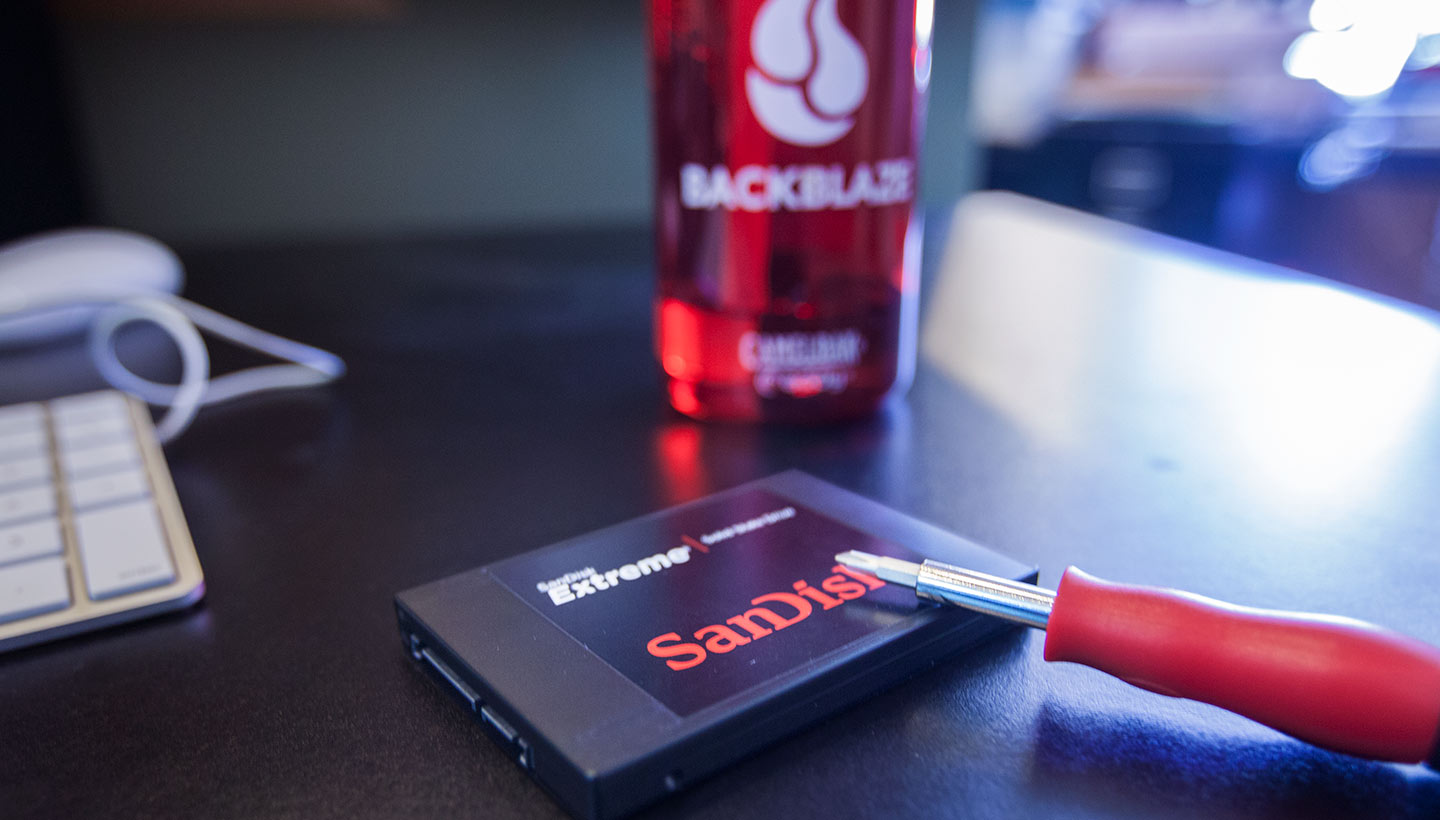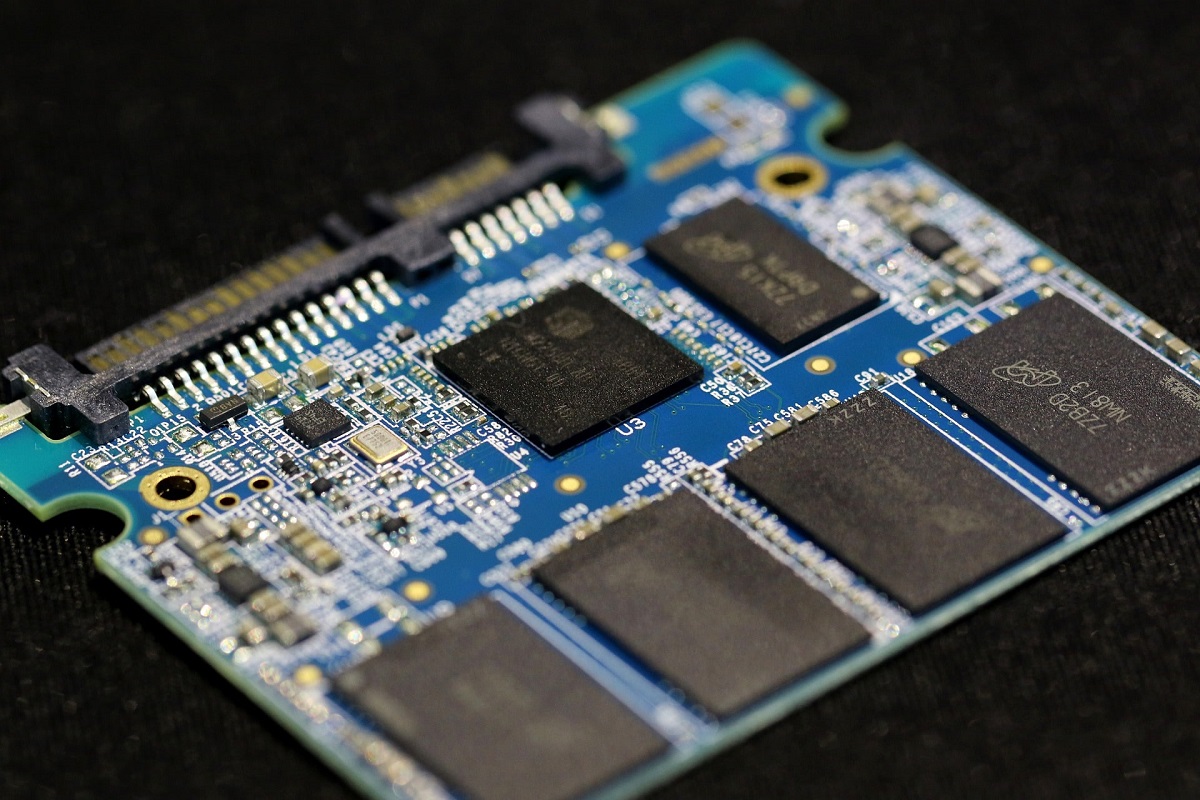Introduction
Welcome to our guide on how to fix SSD bad sectors. Solid State Drives (SSDs) have become increasingly popular due to their faster performance and enhanced durability compared to traditional hard drives. However, like any storage device, SSDs can develop bad sectors over time, which can impact their functionality and lead to data corruption.
In this article, we will explore the causes of SSD bad sectors, how to identify them, and most importantly, how to fix them. We will provide you with step-by-step instructions on using both built-in Windows tools and third-party software to repair these problematic sectors.
Understanding how SSD bad sectors occur is crucial in order to effectively prevent and resolve them. We will discuss the common reasons behind the development of bad sectors on SSDs, including physical damage, manufacturing defects, power outages, and aging of the drive.
Once you have a clear understanding of the causes, we will guide you through the process of identifying the presence of bad sectors on your SSD. This knowledge will enable you to take the necessary steps to resolve the issue and minimize the impact on your data and overall drive performance.
The methods we will discuss range from using built-in Windows tools such as the Error Checking Tool to third-party disk repair software. We will also explore the option of formatting the SSD and checking for firmware updates, which can sometimes resolve bad sector issues.
In some cases, bad sectors on an SSD may be irreparable, or the drive may have a high number of bad sectors indicating a more serious problem. We will address this scenario and provide guidance on when it might be appropriate to consider replacing the SSD.
By the end of this guide, you will have a comprehensive understanding of how to diagnose and fix SSD bad sectors, ensuring your drive remains in optimal condition and your data is safe. So, let’s jump right in and get started with identifying and resolving these troublesome bad sectors!
Understanding SSD Bad Sectors
Before diving into the solutions, let’s take a moment to understand what exactly SSD bad sectors are. Bad sectors refer to areas on the SSD where the data becomes corrupted or can no longer be read or written properly. These sectors are typically marked as unusable by the drive’s firmware to prevent further data corruption.
SSD bad sectors can occur due to various reasons, including physical damage, manufacturing defects, electrical issues, and wear and tear over time. Physical damage can occur if the drive is dropped or subjected to excessive heat or moisture. Manufacturing defects may lead to the presence of bad sectors even in new SSDs.
Electrical issues, such as power outages or unstable power supply, can also contribute to the development of bad sectors on an SSD. Sudden power loss during data writing processes can result in incomplete writes and subsequent data corruption.
Additionally, as an SSD ages, the memory cells used to store data can become less reliable. This can lead to the creation of new bad sectors or the worsening of existing ones. Over time, the wear and tear on the SSD can exceed its durability, resulting in a higher likelihood of bad sector development.
Bad sectors can have various implications for the performance and functionality of an SSD. They can cause data loss, system crashes, and decreased overall drive speed. If left unaddressed, bad sectors can spread and affect other areas of the drive, leading to further data corruption and potential complete drive failure.
It’s important to note that SSDs have built-in mechanisms to detect and manage bad sectors. When a bad sector is detected, the drive’s firmware will automatically reallocate data to a healthy part of the drive. This process is called wear leveling and helps to prolong the lifespan of the SSD. However, excessive bad sectors can overwhelm the firmware’s ability to keep up, necessitating manual intervention to fix the issue.
In the next section, we will discuss how to identify the presence of bad sectors on your SSD. Understanding how to detect these problem areas is crucial in order to initiate the appropriate repair measures and ensure the integrity of your data.
Identifying SSD Bad Sectors
In order to effectively fix SSD bad sectors, you first need to identify their presence on your drive. Fortunately, there are several methods you can use to detect these problematic sectors and determine their extent. Let’s explore these methods:
- Check S.M.A.R.T. Data: S.M.A.R.T. (Self-Monitoring, Analysis, and Reporting Technology) is a feature built into most modern SSDs that provides information about the drive’s health. You can access this data using various software tools or the drive’s manufacturer-provided utility. Look for attributes related to bad sectors, such as “Uncorrectable Errors” or “Reallocated Sectors.” High values in these attributes indicate the presence of bad sectors.
- Run a Surface Scan: Many disk diagnostic tools offer a surface scan feature that checks for bad sectors on the SSD. These tools read every sector of the drive to verify its integrity. When a bad sector is encountered, the tool will mark it and provide a report of the findings. Examples of such tools include CrystalDiskInfo, HD Tune, and HDTune Pro.
- Use CHKDSK Command: CHKDSK is a built-in Windows command that can be used to check and repair file system errors. It can also help identify and fix bad sectors on an SSD. Open the Command Prompt as an administrator and run the command “chkdsk /r” followed by the drive letter of your SSD (e.g., “chkdsk /r C:”) This command will scan the drive for errors and attempt to repair any bad sectors it finds.
- Monitor Drive Performance: Another way to identify bad sectors is by monitoring the performance of your SSD. Look for signs such as slow file transfers, frequent crashes or system freezes, and increased access times. If you notice these issues, it could indicate the presence of bad sectors on the drive.
By using these methods, you will be able to determine whether your SSD has developed any bad sectors and the severity of the issue. Once you have identified the problem areas, you can proceed with the appropriate methods to fix the bad sectors, which we will discuss in the following sections.
Reasons for SSD Bad Sectors
SSD bad sectors can occur due to a variety of reasons, both internal and external. Understanding these reasons can help in preventing and addressing the development of bad sectors on your SSD. Let’s explore the common causes:
- Physical Damage: Physical damage is one of the primary causes of bad sectors on SSDs. Dropping the drive, exposing it to excessive heat or moisture, or mishandling it in any way can lead to sectors becoming unreadable or corrupt. It is important to handle your SSD with care to minimize the risk of physical damage.
- Manufacturing Defects: In rare cases, SSDs may have manufacturing defects that result in the presence of bad sectors right out of the box. These defects can occur during the production process and may go undetected during quality control checks. However, most reputable manufacturers have strict quality control measures in place to minimize the occurrence of such defects.
- Electrical Issues: Power outages or unstable power supply can contribute to the development of bad sectors on an SSD. When power is suddenly lost during the data writing process, incomplete writes may occur, resulting in data corruption and the presence of bad sectors. Using an uninterruptible power supply (UPS) or a reliable power source can help mitigate the risk of electrical issues.
- Aging of the Drive: As an SSD ages, the memory cells used to store data can become less reliable. This can lead to the development of new bad sectors or the worsening of existing ones. The overall lifespan of an SSD depends on various factors, such as the quality of the drive and the amount of data written to it. Regularly monitoring the health of your SSD can help identify and address any age-related issues.
- Excessive Writes: SSDs have a limited number of write cycles before they start to degrade. Excessive writes to the drive can accelerate its wear and tear, leading to the development of bad sectors. This is especially relevant for drives used in high-intensity workloads, such as servers or gaming systems. Reducing unnecessary writes or implementing wear leveling techniques can help prolong the lifespan of your SSD.
It’s important to note that while some causes of bad sectors can be prevented or minimized with proper care and maintenance, others, such as manufacturing defects or aging of the drive, are inevitable. Regularly backing up your data and monitoring the health of your SSD can help identify and address any bad sectors before they impact the integrity of your data.
Now that we understand the reasons behind the development of bad sectors, let’s move on to the methods for fixing them in the following sections.
How to Fix SSD Bad Sectors
Fixing SSD bad sectors is crucial to ensure the optimal performance and reliability of your drive. There are several methods you can try to repair these problematic sectors. Let’s explore each method in detail:
Method 1: Using Windows Error Checking Tool
The built-in Error Checking Tool in Windows can help identify and repair bad sectors on your SSD. To use this tool, follow these steps:
- Open File Explorer and right-click on the SSD drive you want to check.
- Select “Properties” and navigate to the “Tools” tab.
- Under the “Error Checking” section, click on “Check” to start the scanning process.
- Windows will scan the drive for errors, including bad sectors, and attempt to fix them.
- Wait for the process to complete, and follow any on-screen instructions if prompted.
Method 2: Using Third-Party Disk Repair Software
There are several third-party disk repair software options available that can effectively detect and repair bad sectors on your SSD. Some popular choices include CrystalDiskInfo, HD Tune, and HDTune Pro. These tools provide more advanced scanning and repair capabilities, allowing you to thoroughly analyze and fix bad sectors.
Method 3: Formatting the SSD
If the bad sectors on your SSD are not extensive, formatting the drive may help in resolving the issue. However, keep in mind that formatting will erase all data on the drive, so be sure to back up your important files beforehand. To format the SSD, follow these steps:
- Open File Explorer and right-click on the SSD drive.
- Select “Format” and choose the desired file system and allocation unit size.
- Check the “Quick Format” option if available.
- Click on “Start” to begin the formatting process.
- Once the formatting is complete, test the drive for any signs of bad sectors.
Method 4: Check for Firmware Updates
Manufacturers often release firmware updates to address known issues and improve the performance of SSDs. Checking for firmware updates specific to your SSD model and applying them can help in resolving bad sector problems. Visit the manufacturer’s website or use their provided software to check for and install available updates.
Method 5: Consider Replacing the SSD
In some cases, if the SSD has a high number of bad sectors or they keep reappearing after repair attempts, it may be an indication of a more serious underlying issue. At this point, it might be worth considering replacing the SSD to avoid potential data loss or complete drive failure.
It’s important to note that not all bad sectors can be fixed. Therefore, regular backups are essential to ensure the safety of your valuable data regardless of the repair efforts.
Now that you are familiar with the methods to fix SSD bad sectors, you can choose the appropriate approach based on your specific situation. Remember to always backup your important data before attempting any repair methods to minimize the risk of data loss.
Method 1: Using Windows Error Checking Tool
One of the easiest ways to fix SSD bad sectors is by utilizing the built-in Error Checking Tool in Windows. This tool performs a scan of the SSD, identifies any errors, including bad sectors, and attempts to repair them. Here’s how you can use the Windows Error Checking Tool:
- Open File Explorer by clicking on the folder icon in the taskbar or by pressing the “Windows” key and “E” simultaneously.
- Locate the SSD drive you want to check for bad sectors in the list of drives displayed.
- Right-click on the SSD drive and select “Properties” from the contextual menu.
- Navigate to the “Tools” tab in the Properties window.
- Under the “Error Checking” section, click on the “Check” button.
- A dialog box will appear, asking if you want to schedule the disk check to occur the next time you restart your computer. Choose either “Scan and repair drive” or “Scan drive” depending on your preference.
- If you opt to scan and repair the drive immediately, you may need to provide administrative privileges by clicking on “Schedule disk check.”
- The Error Checking Tool will now start scanning the SSD for errors, including bad sectors.
- The tool will attempt to repair any bad sectors it encounters during the scan process.
- Depending on the size of your SSD and the number of files stored on it, the scanning and repair process may take some time to complete.
- Once the process is finished, you will be notified of the results. If any bad sectors were found and repaired, you will see a message indicating that the drive is now error-free.
It’s important to note that the Windows Error Checking Tool may not always be able to fix all bad sectors. If it cannot repair the sectors, it is recommended to explore alternative methods or consider seeking professional assistance.
Using the Windows Error Checking Tool is a simple and convenient method to detect and repair bad sectors on your SSD. Regularly performing this check can help ensure the health and longevity of your drive, preventing potential data loss and system instability caused by bad sectors.
Method 2: Using Third-Party Disk Repair Software
If the built-in Windows tools fail to fix the bad sectors on your SSD, or if you prefer a more comprehensive solution, you can turn to third-party disk repair software. These software options offer advanced scanning and repair capabilities specifically designed to identify and resolve bad sectors. Here’s how you can use third-party disk repair software to fix SSD bad sectors:
- Research and choose a reputable third-party disk repair software program that is compatible with your SSD and operating system.
- Download and install the selected software on your computer.
- Launch the software and follow the on-screen instructions to navigate to the disk repair or bad sector scanning feature.
- Select your SSD drive as the target for the scan and repair process.
- Configure any advanced settings, such as the scan depth or repair method, if available.
- Initiate the scanning process by clicking on the “Scan” or “Start” button.
- The software will perform a thorough scan of the SSD, identifying any bad sectors present.
- Once the scan is complete, the software will provide a report detailing the number and location of bad sectors found on the drive.
- If the software offers an automatic repair option, you can choose to proceed with the repair by following the on-screen prompts. Alternatively, some software may provide a manual repair option.
- Allow the software to repair the bad sectors on the SSD. This process may involve marking the sectors as unusable or attempting to recover and relocate the data from the bad sectors.
- Be patient, as the repair process may take some time depending on the size of your SSD and the number of bad sectors detected.
- Once the repair is complete, the software will notify you of the results and whether any further action is required.
It’s important to note that not all third-party disk repair software is created equal, and some may work better than others for your specific SSD model. It is recommended to read reviews and do thorough research before selecting a software program and to follow the instructions provided by the software vendor carefully.
Using third-party disk repair software can provide a deeper level of analysis and repair for bad sectors on your SSD. It’s a viable option when the built-in Windows tools are unable to fix the issue or if you prefer more advanced diagnostic and repair features.
Method 3: Formatting the SSD
If you’re dealing with a relatively small number of bad sectors on your SSD, one potential solution is to format the drive. Formatting the SSD erases all data on the drive and can help to resolve any file system-related issues, including some types of bad sectors. However, it’s important to note that formatting should only be considered as a last resort, as it will result in the loss of all data stored on the SSD. Make sure to back up your important files before proceeding.
Here’s how you can format your SSD to potentially fix bad sectors:
- Open File Explorer by clicking on the folder icon in the taskbar or by pressing the “Windows” key and “E” simultaneously.
- Locate the SSD drive you want to format in the list of drives displayed.
- Right-click on the SSD drive and select “Format” from the contextual menu.
- In the Format dialog box, choose the desired file system from the drop-down menu. Most users opt for the default NTFS file system.
- Choose the appropriate allocation unit size. The default allocation unit size is usually recommended for most users.
- If available, check the “Quick Format” option. This option will expedite the formatting process by skipping the complete zero-filling of the drive.
- Double-check that you have selected the correct SSD drive for formatting.
- Click on the “Start” button to begin the formatting process.
- Wait for the formatting process to complete. This may take some time depending on the size of your SSD.
- Once the formatting is finished, you can test the SSD for any signs of bad sectors or other issues.
Keep in mind that formatting the SSD may not always repair all types of bad sectors, particularly those caused by physical damage or manufacturing defects. If the bad sectors persist after formatting, it is advisable to consider alternative methods or seek professional assistance.
Formatting the SSD is a drastic step that should only be taken when other methods have failed to resolve the bad sector issue. Remember to back up your important data regularly to avoid permanent data loss.
Method 4: Check for Firmware Updates
Checking for firmware updates for your SSD can be a helpful method to fix bad sectors and improve overall performance. SSD manufacturers regularly release firmware updates to address known issues, including bad sector problems. These updates may contain fixes or enhancements that could resolve any existing issues on your SSD. Here’s how you can check for firmware updates:
- Identify the manufacturer and model of your SSD. This information is usually available on the SSD itself or its packaging.
- Visit the manufacturer’s official website and navigate to the support or download section.
- Search for your specific SSD model using the provided search function or browse the available products.
- Look for the firmware section for your SSD model and check for any available updates.
- If a firmware update is available, carefully read the release notes to understand the improvements and fixes it provides.
- Download the firmware update tool or utility provided by the manufacturer.
- Follow the instructions provided by the manufacturer to install and use the firmware update tool.
- Ensure that your SSD is connected to your computer and recognized by the firmware update tool.
- If prompted, backup any important data on your SSD before proceeding with the firmware update.
- Initiate the firmware update process and follow the on-screen instructions to complete the update.
- Once the update is finished, restart your computer and verify if the firmware update has resolved any bad sector issues.
It’s important to note that firmware updates are specific to each SSD model, so it’s essential to download and install the correct update for your SSD. Incorrectly installing firmware updates or using firmware updates intended for different models can lead to potential problems or even permanent damage to the drive.
Checking for firmware updates and keeping your SSD firmware up to date can help prevent and solve bad sector issues. It is recommended to periodically check for firmware updates to ensure your SSD is running with the latest firmware version available.
Method 5: Consider Replacing the SSD
In some cases, when the SSD has a significant number of bad sectors that cannot be repaired or if the bad sectors keep reappearing after repair attempts, it may be an indication of more severe underlying issues. At this point, it might be worth considering replacing the SSD to avoid potential data loss or complete drive failure.
Here are some signs that suggest you should consider replacing your SSD:
- Extensive Bad Sectors: If your SSD has a large number of bad sectors, it may indicate fundamental issues with the drive’s integrity. Repairing numerous bad sectors might not be practical or effective in the long run.
- Unresolved Bad Sectors: If you have attempted various repair methods, such as using built-in tools, third-party software, or formatting, and the bad sectors persist or keep reoccurring, it may be an indication of deeper hardware problems that cannot be resolved by software alone.
- Persistent Performance Issues: If your SSD consistently exhibits performance problems, such as slow file transfers, frequent system crashes, or unusually high access times, despite attempts to repair bad sectors, it may suggest that the drive itself is at fault.
- Age and Warranty: If your SSD is nearing its end-of-life or has surpassed its warranty period, it may be a good time to consider replacing it with a newer model. SSDs have a limited lifespan, and older drives are more prone to developing bad sectors and other reliability issues.
- Critical Data at Risk: If your SSD contains crucial data that you cannot afford to lose, replacing the drive may be a safer option. Persistent bad sectors can increase the risk of data corruption and loss, and relying on a compromised drive may put your valuable information in jeopardy.
When considering replacing your SSD, be sure to research and choose a reliable and compatible replacement model. Take into account factors such as capacity, performance, and reliability to suit your specific needs.
To mitigate the risk of data loss during the transition, it’s advisable to back up your data regularly and securely transfer it to the new SSD. This way, you can ensure the safe transfer of your important files and minimize potential disruptions.
Replacing the SSD is a viable solution when extensive bad sectors persist or when other repair methods prove ineffective. It allows you to start fresh with a new drive, ensuring the integrity of your data and the performance of your system.
Conclusion
SSD bad sectors can be a troublesome issue that affects the performance and reliability of your drive. However, with the right knowledge and tools, you can effectively address and resolve these problematic sectors.
In this guide, we explored various methods to fix SSD bad sectors. We started by understanding the causes behind the development of bad sectors, including physical damage, manufacturing defects, electrical issues, and the aging of the drive. Identifying bad sectors is a crucial step, and we discussed methods such as checking S.M.A.R.T. data, running surface scans, using CHKDSK, and monitoring drive performance.
We then delved into the methods for fixing bad sectors, including using the built-in Windows Error Checking Tool, utilizing third-party disk repair software, formatting the SSD, checking for firmware updates, and considering SSD replacement in more severe cases.
It’s important to note that while these methods can often resolve bad sectors, some bad sectors may be unrepairable due to physical damage or serious underlying issues with the drive. Regularly backing up your data ensures the safety of your important files regardless of the repair efforts.
Preventing bad sectors requires proactive measures such as proper handling and care for your SSD, maintaining a stable power supply, minimizing excessive writes, and staying vigilant about firmware updates.
Remember to consider the specific needs and circumstances of your SSD when choosing a method to fix bad sectors. When in doubt, consulting with professionals or reaching out to the manufacturer’s support can provide valuable guidance.
By taking the necessary steps to fix SSD bad sectors and implementing preventive measures, you can maintain the health and performance of your SSD, ensuring the integrity and longevity of your data for years to come.







